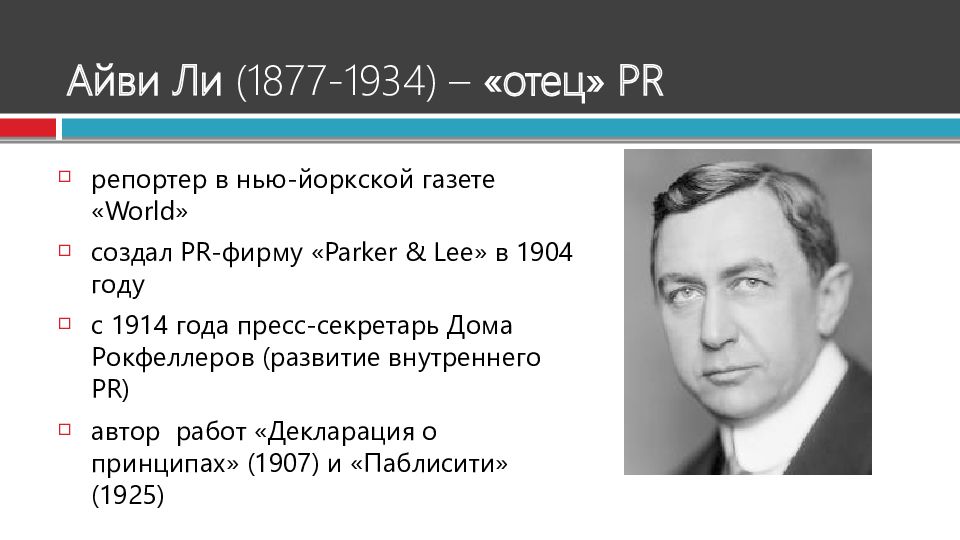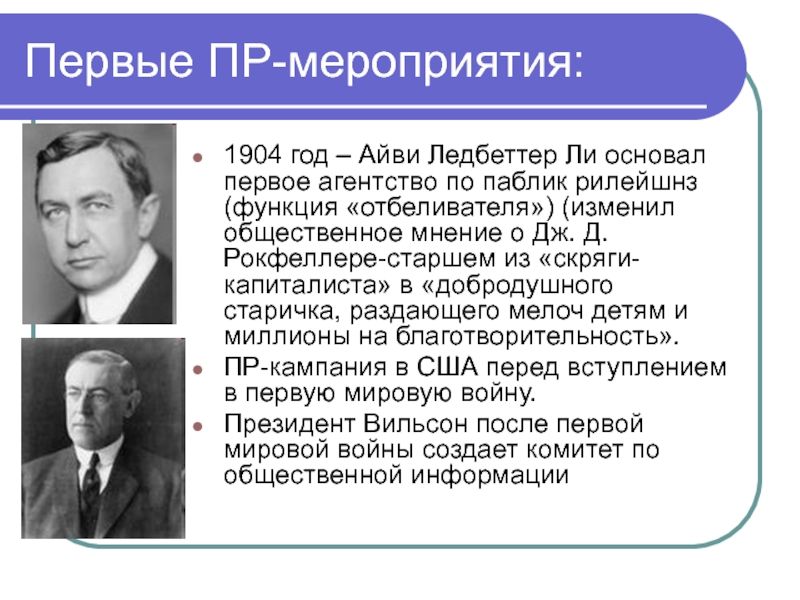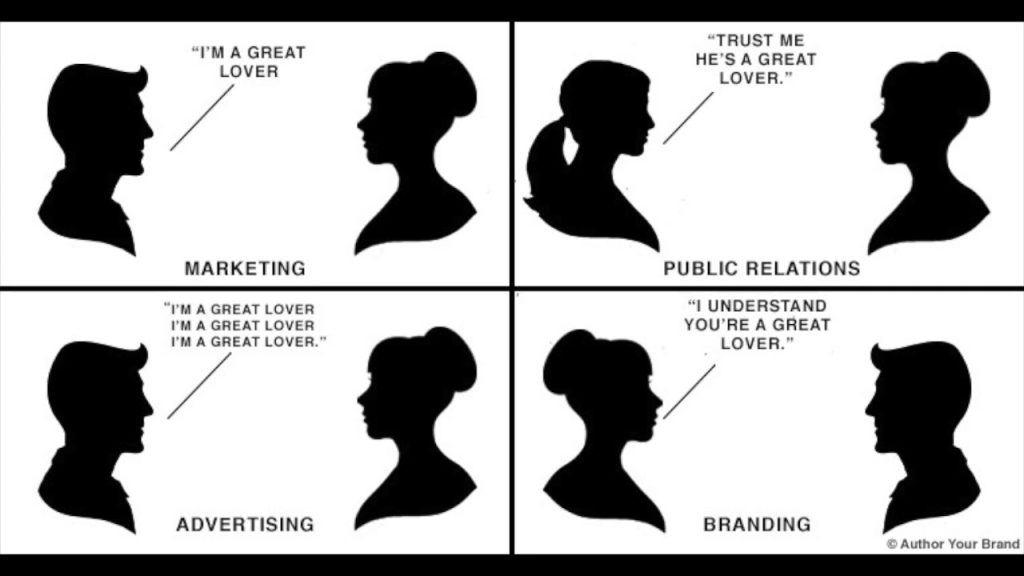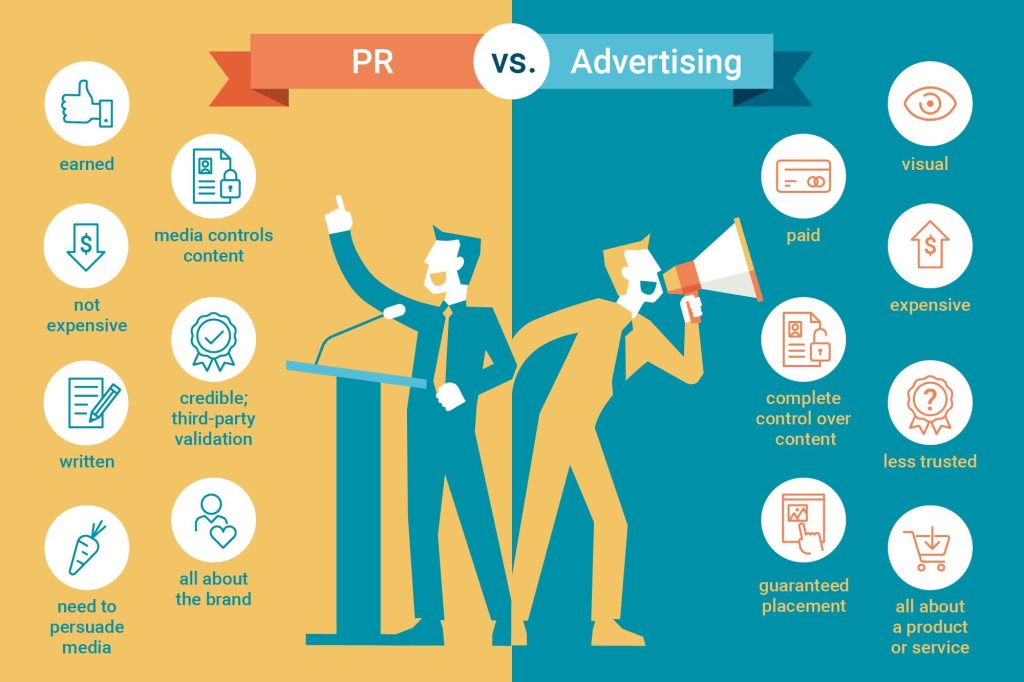Marketing and PR are two key concepts in modern business culture. Every day, we encounter various advertising and marketing campaigns, as well as news reports, that create a certain perception of an organization or product. But what do these terms actually mean, and how did they emerge historically?
Two concepts
Marketing is the process of planning and implementing concepts, products, pricing, promotion, and distribution of ideas, goods, or services that satisfy consumer needs and achieve organizational goals. Marketing is an integral part of any business and includes many elements, such as market research, brand management, competitor analysis, target audience identification, and more.
The term "marketing" emerged in the mid-20th century, although the concept of marketing has been known since the Industrial Revolution in the 18th century. The basic idea of marketing is that companies should research consumer needs and wants and create products or services that satisfy them. In the past, companies believed their products would be in demand without the need for any special advertising. However, in the 20th century, marketing became an important tool for promoting goods and services in the marketplace.
PR (Public Relations) is the process of creating and managing the public image of a company or organization. PR encompasses a wide range of activities, such as creating press releases, organizing events, connecting with journalists and bloggers, creating web content, and more.
Target PR is about establishing good relations with the public and creating a positive perception of a company or organization.
The term "PR" emerged in the early 20th century, when companies began to understand that their public image was crucial and could impact their success. In 1906, Ivy Lee is considered one of the first people to use the term "public relations" in their work. Hired by a US railroad company facing a major disaster, Lee was tasked with managing public relations and changing public perceptions of the company.
In the 1920s, PR began to be used increasingly by large companies such as General Electric, Procter & Gamble, and AT&T. In the 1950s and 1960s, PR became an indispensable tool in political campaigns, and many political leaders began using PR techniques to build their image and communicate with voters.
Today, marketing and PR are an integral part of any company or organization, and their use has become essential for building a successful business and managing its public image. In the modern world, numerous methods and technologies exist to help companies achieve their marketing and PR goals, and these fields continue to evolve and change in line with societal changes and technological innovations.


Differences between marketing and PR
Marketing and PR are two important aspects of business that help organizations achieve success in their industry. While they both focus on communications and strategy, they have some key differences.
One of the main differences between marketing and PR is that marketing is a way to promote a company's products and services, while PR is a way to manage public opinion about the company. Marketing typically includes market research, brand positioning, advertising, and sales, while PR encompasses public relations, public affairs, reputation management, and crisis management.
Target audience:
Marketing and PR have different target audiences. Marketing typically targets audiences already interested in a product or service. This means marketing strategies can be more focused and sales-oriented, as the customer is already considering the product.
On the other hand, PR focuses on a broad audience and the overall reputation of the brand. It's not sales-oriented, but rather on creating a respected image of the company in the eyes of a wider audience, which in turn can lead to potential sales.
Tactics: Goals and Focus:
Marketing and PR also have different goals and focuses. Marketing aims to increase sales and profits. It focuses on the specific products and services the company offers and how best to sell them.
PR has a broader focus, aiming to create a positive brand image and strengthen public relations. It may include media outreach, content creation for social media, and other forms of public communication.
Money
Finally, marketing and PR have different budgets and expenses. Marketing often requires greater investment, as it aims to attract new customers and increase sales. A large portion of the marketing budget may be spent on advertising, events, and product promotion.
PR, on the other hand, can be a more cost-effective option, as it focuses on building a company's image and public relations. A PR budget may include hiring a PR agency, organizing press conferences, working with social media, and creating content. However, a more successful PR campaign may require more time and effort to establish and maintain public relations.
Degree of trust
Another difference between marketing and PR is the level of trust. In marketing, the company often acts as the seller, and the potential client as the buyer. Therefore, many people approach marketing with a certain degree of mistrust and skepticism. On the other hand, PR is often associated with managing a company's reputation, public activities, and stakeholder communications. In this case, public relations can enhance trust and create a positive image of the company.

Form of communication
Another difference between marketing and PR is the form of communication. Marketing often uses a one-way channel of interaction, where a company promotes its products or services, and customers either accept or reject the offer. PR, on the other hand, typically uses a two-way channel of interaction, where a company creates a dialogue with the public, listens to their opinions, and responds to them.
Evaluation of results
Finally, marketing and PR differ in how they evaluate and measure results. In marketing, results are typically assessed in terms of sales, conversions, and other metrics that can be measured and compared with those of other companies.
In PR, on the other hand, results are often more difficult to measure and evaluate. For example, public opinion of a company or its reputation can be both perceived and subjective. However, there are tools for assessing these metrics, such as social media monitoring, public opinion surveys, reputation analysis, and others.
Marketing and PR are two distinct but interconnected functions that help companies achieve their business goals. Both are focused on audience engagement, but they have different goals and methods.
Marketing is the process of planning and implementing actions aimed at promoting a company's products and services to the market. The primary goal of marketing is to increase sales and revenue. To achieve this goal, marketing utilizes a wide range of tools, including advertising, social media promotion, SEO optimization, pricing management, market research, and more.
PR (public relations) is the process of creating and maintaining a positive image of a company in the eyes of its audience. The primary goal of PR is to establish and maintain trusting relationships with consumers, investors, the media, and other stakeholders. To achieve this goal, PR utilizes a variety of tools, including organizing press conferences, participating in public events, publishing media articles, reputation monitoring, and more.
Life cycle and impact on the product
Marketing is sales-oriented and typically involves specific promotional campaigns that have a defined life cycle. PR, on the other hand, is focused on long-term relationships with audiences, and its life cycle has no clear boundaries.
One of the key aspects that distinguishes these two areas is their impact on the product life cycle.
The product life cycle is the process of product development from its inception to its exit from the market. This cycle consists of several stages, including development, introduction, growth, maturity, and decline. Each of these stages has its own unique characteristics and requires a specific approach from marketing and PR.
During the product development stage, marketing and PR play a vital role in identifying market needs and assessing the competitive landscape. Marketing can conduct market research and determine which consumers are interested in the product, while PR can determine which media will be most effective for promoting the product.
During the implementation stage, marketing plays a key role in promoting the product in the market. Marketing can develop a product promotion strategy, including pricing, placement, and promotion. PR can focus on establishing a positive image of the company and product, using media to disseminate information about the product.
During the growth stage, marketing and PR can work together to continue attracting new customers and developing the brand. Marketing can develop a strategy for market expansion, while PR can use media to strengthen the company and product image.
At the maturity stage, marketing and PR can focus on maintaining and increasing market share. Marketing can continue to research the market and develop new promotion strategies, while PR can continue to strengthen the company and product image.
During the decline stage, marketing and PR can work together to manage the product lifecycle and minimize losses. Marketing can develop a strategy to reduce costs and sales, while PR can use media to mitigate the negative impact on the company and product image.
One of the key differences between marketing and PR is their primary goals. Marketing focuses on selling a product, while PR focuses on creating and maintaining a positive company image. Marketing may use advertising, direct sales, and other methods to persuade consumers to buy a product, while PR may use public relations, social media, and other means to create a positive company image.
Another difference between marketing and PR is their approach to consumer communications. Marketing typically works directly with consumers, providing them with information about a product and persuading them to buy it. PR uses the media to create a positive image of the company and product in the eyes of consumers.

Conclusion
Ultimately, marketing and PR are two essential components of a product's marketing strategy. While these two areas are closely related, each has its own unique characteristics and requires different approaches to managing the product lifecycle. It's important to note that marketing and PR are interrelated and can reinforce each other. Marketing can help increase brand awareness and attract new customers, while PR can strengthen relationships with existing customers and increase customer loyalty.
However, despite their similarities and interconnections, marketing and PR still have their differences and distinct methods of operation. When used correctly, both functions can help a company achieve its business goals and establish long-term relationships with its audience.







